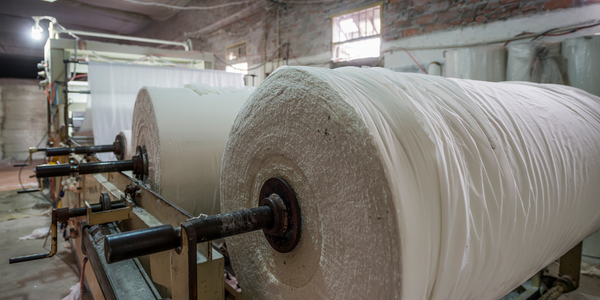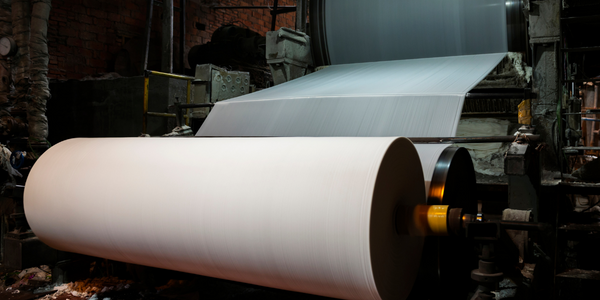Download PDF
How Clearwater Paper Uses FourKites to Foster Collaboration and Efficiency Throughout Its Network
Technology Category
- Analytics & Modeling - Predictive Analytics
- Functional Applications - Fleet Management Systems (FMS)
- Networks & Connectivity - Network Management & Analysis Software
Applicable Industries
- Paper & Pulp
- Retail
Applicable Functions
- Logistics & Transportation
- Warehouse & Inventory Management
Use Cases
- Fleet Management
- Predictive Maintenance
- Supply Chain Visibility
Services
- System Integration
- Training
The Challenge
Clearwater Paper sought a supply chain visibility solution in 2016 to improve efficiencies, communication, and collaboration throughout its network. The company aimed to shift from a 'tender-a-load-and-forget-it' culture to one that provides higher customer service and proactive operations management. Prior to deploying FourKites, Clearwater Paper was bogged down by home-grown technology that lacked tracking tools and communication capabilities, leading to strained relationships with carriers.
About The Customer
Clearwater Paper, based in Spokane, Washington, is a premier private brand tissue manufacturer and producer of high-quality paper products. Founded in 1900 as the Clearwater Timber Company in Lewiston, Idaho, the company has evolved over its 120+ year history to become an industry leader. It operates 12 facilities across the U.S. and employs 3,000 people, generating $1.8 billion in annual revenue. Clearwater Paper supplies private brand tissue to major retailers, including grocery, club, mass merchants, and discount stores, and produces bleached paperboard for quality-conscious printers and packaging converters.
The Solution
Clearwater Paper started its journey with FourKites in 2016, managing approximately 5,000 monthly loads on FourKites’ end-to-end supply chain visibility platform, including truckload, LTL, and parcel. The platform provides real-time visibility and predictive ETAs, allowing yard, dock, and warehouse personnel to reassign staff and minimize delays. FourKites’ technology has also improved relationships with carriers by reducing manual check calls and dwell times. The platform’s advanced machine learning ETA predictions enable proactive management of sales, customer, and carrier expectations, enhancing communication and collaboration across internal and external stakeholders.
Operational Impact
Quantitative Benefit
Related Case Studies.

Case Study
Improving Production Line Efficiency with Ethernet Micro RTU Controller
Moxa was asked to provide a connectivity solution for one of the world's leading cosmetics companies. This multinational corporation, with retail presence in 130 countries, 23 global braches, and over 66,000 employees, sought to improve the efficiency of their production process by migrating from manual monitoring to an automatic productivity monitoring system. The production line was being monitored by ABB Real-TPI, a factory information system that offers data collection and analysis to improve plant efficiency. Due to software limitations, the customer needed an OPC server and a corresponding I/O solution to collect data from additional sensor devices for the Real-TPI system. The goal is to enable the factory information system to more thoroughly collect data from every corner of the production line. This will improve its ability to measure Overall Equipment Effectiveness (OEE) and translate into increased production efficiencies. System Requirements • Instant status updates while still consuming minimal bandwidth to relieve strain on limited factory networks • Interoperable with ABB Real-TPI • Small form factor appropriate for deployment where space is scarce • Remote software management and configuration to simplify operations

Case Study
How Sirqul’s IoT Platform is Crafting Carrefour’s New In-Store Experiences
Carrefour Taiwan’s goal is to be completely digital by end of 2018. Out-dated manual methods for analysis and assumptions limited Carrefour’s ability to change the customer experience and were void of real-time decision-making capabilities. Rather than relying solely on sales data, assumptions, and disparate systems, Carrefour Taiwan’s CEO led an initiative to find a connected IoT solution that could give the team the ability to make real-time changes and more informed decisions. Prior to implementing, Carrefour struggled to address their conversion rates and did not have the proper insights into the customer decision-making process nor how to make an immediate impact without losing customer confidence.

Case Study
Wireless Improves Efficiency in Compressed Air Systems
Hollingsworth and Vose wanted to improve the efficiency of their compressed air system, lower the electricity expense component of manufacturing cost in their commodity industry, and conserve energy leading to lowered greenhouse gas emissions. Compressed air systems degrade over time and become leaky and inefficient. Hollingsworth and Vose wanted to increase the frequency of system inspections without paying the high cost of manual labor.

Case Study
Digital Retail Security Solutions
Sennco wanted to help its retail customers increase sales and profits by developing an innovative alarm system as opposed to conventional connected alarms that are permanently tethered to display products. These traditional security systems were cumbersome and intrusive to the customer shopping experience. Additionally, they provided no useful data or analytics.

Case Study
Process Predictive Analysis in Pulp and Paper Mill
Common paper breaks consequently lead up to 60 minutes of downtime, delaying a potential $10K per hour of production value process. Thus, defective products cause financial and damage company's reputation. Improving quality and reducing defect rates can generate millions of dollars of revenue per year for your company.





